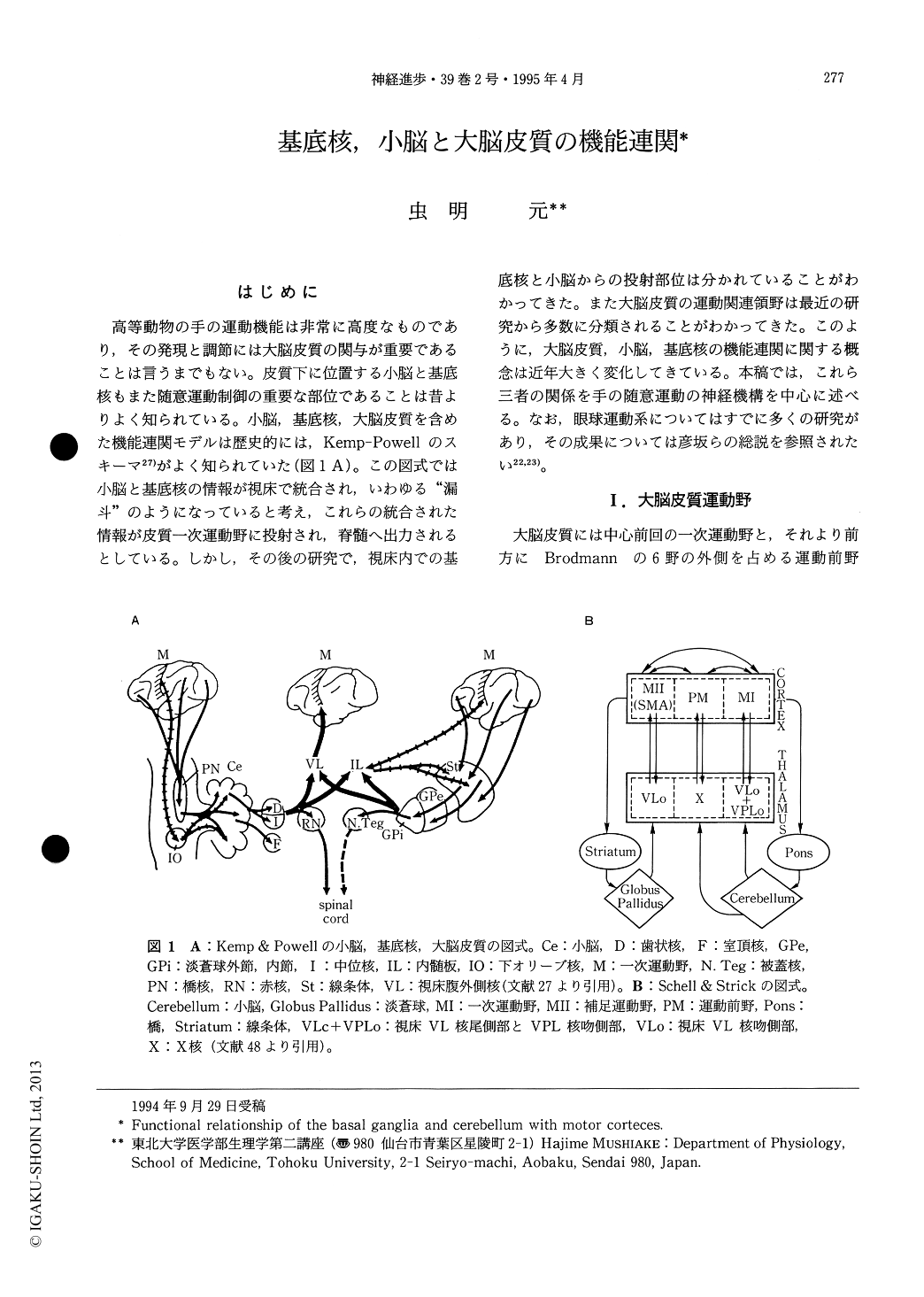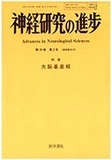Japanese
English
- 有料閲覧
- Abstract 文献概要
- 1ページ目 Look Inside
はじめに
高等動物の手の運動機能は非常に高度なものであり,その発現と調節には大脳皮質の関与が重要であることは言うまでもない。皮質下に位置する小脳と基底核もまた随意運動制御の重要な部位であることは昔よりよく知られている。小脳,基底核,大脳皮質を含めた機能連関モデルは歴史的には,Kemp-Powellのスキーマ27)がよく知られていた(図1A)。この図式では小脳と基底核の情報が視床で統合され,いわゆる“漏斗”のようになっていると考え,これらの統合された情報が皮質一次運動野に投射され,脊髄へ出力されるとしている。しかし,その後の研究で,視床内での基底核と小脳からの投射部位は分かれていることがわかってきた。また大脳皮質の運動関連領野は最近の研究から多数に分類されることがわかってきた。このように,大脳皮質,小脳,基底核の機能連関に関する概念は近年大きく変化してきている。本稿では,これら三者の関係を手の随意運動の神経機構を中心に述べる。なお,眼球運動系についてはすでに多くの研究があり,その成果については彦坂らの総説を参照されたい22,23)。
The basal ganglia and cerebellum play significant roles with the motor cortexes in voluntary motor behavior. In the past, the efferents from the basal ganglia and cerebellum were thought to converge upon the same region of the thalamic nucleus and this thalamic region projected exclusively to the primary motor cortex. It is clear now that basal ganglia and cerebellar efferents projected to largely separate subdivisions of the thalamus. Outputs from these thalamic regions were directed not only the primary motor cortex, but also premotor areas in the frontal lobe.

Copyright © 1995, Igaku-Shoin Ltd. All rights reserved.


